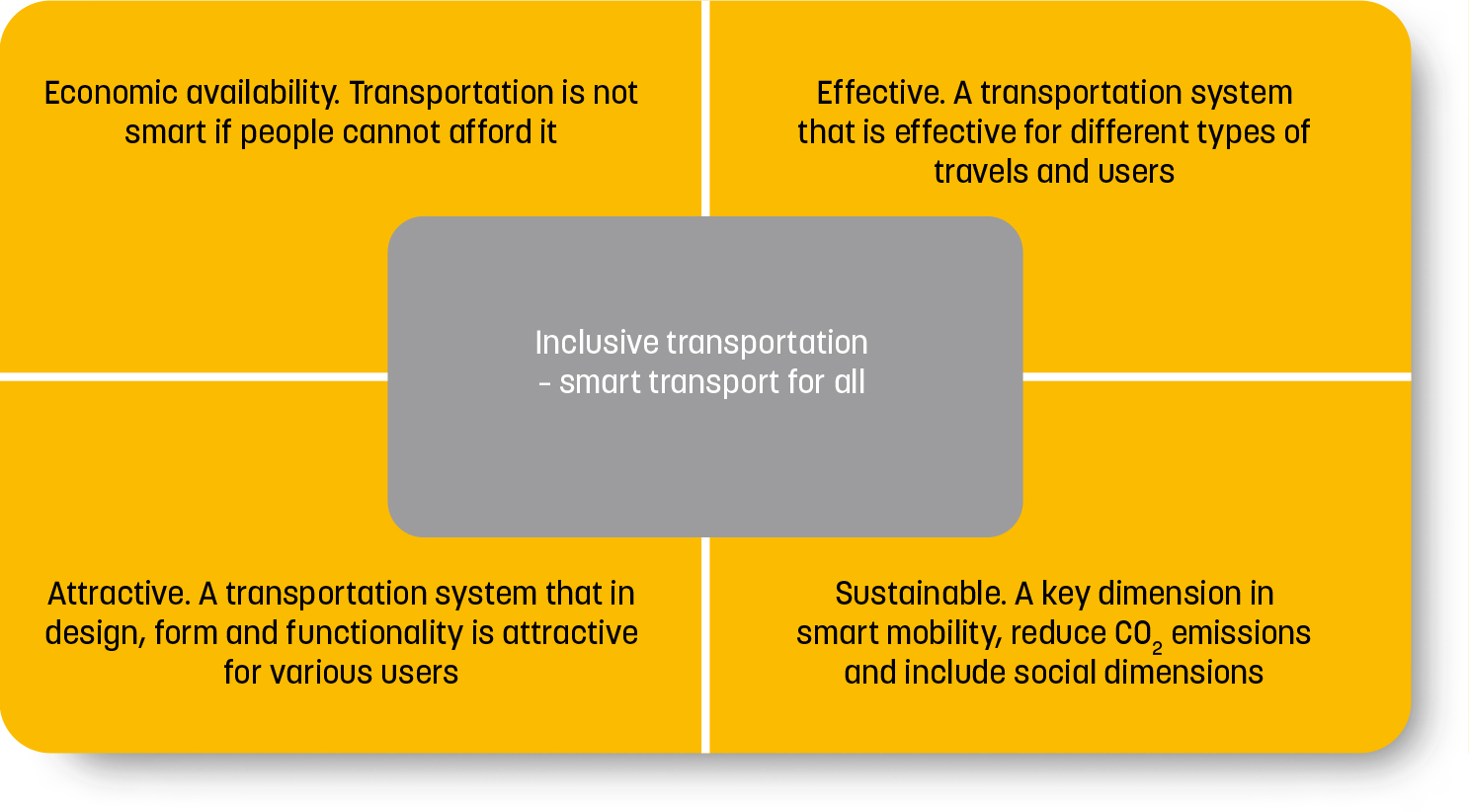In order to develop a transport system that fits the needs of various social groups, you need data that are relevant to these needs. This article looks at what data you need to prepare policies for mobility and gender.
Hilda Rømer Christensen, Associate Professor, University of Copenhagen
Michala Hvidt Breengaard, Postdoc, University of Copenhagen
Lena Levin, Senior Research Leader, VTI, Linkøping, Sweden
Transport data are of vital importance for planning, policy, and practices. Knowing how to find, collect, analyse, and communicate data is of increasing importance not only for transport analysis in the narrow sense, but also for the analysis of how transport interacts with different social needs. Transport data provide the basis for real interventions which will have lasting effects on various groups, their well-being and their means of everyday mobility.
Bias towards motorized transport
In principle transport modalities cover all forms of transport, such as air, road, rail, and sea-maritime. Yet, national transport data tend mainly to cover motorized transport – be it private or public.
In some countries various sub-forms of transport have also entered the national travel data – e.g. motorbikes, scooters, and bikes of various types. More recently, walking has been included as part of the modality landscape.
One can say that ‘what gets counted counts’, and the modalities that are most intensively covered by existing transport data will also be the most dominant and highly valued. Therefore, motorized transport, in particular cars, take centre stage in existing data collections, which again form the basis for infrastructure plans and investments (Christensen et al. 2017).
Moreover, data in the transport sector are often technocratic and quantitative, while social data and qualitative approaches are more seldom available.
A lack of data
The currently available data-collections on citizens mobility are scarce both at European and at global levels. Data provision in the field of transport and gender equality also lags behind in important areas such as family, workplace, health, and education.
Still, some data in these areas are collected by national statistics and global forums on a continuous basis. Such data are, for example, published annually in the Global Gender Gap index and on an ongoing basis in the Gender Equality Index launched by the European Institute of Gender Equality (EIGE).

Need for data on transport and women’s needs
Both quantitative and qualitative data are needed in order for us to understand how and why mobility conditions vary between citizen groups, and how some people are at risk being left behind.
We need data on inadequate transport systems and, in particular, on how women’s access to education, economic opportunities, and healthcare is restricted.
Emerging research of gender in transport has demonstrated that gender makes an important difference in terms of needs and practices in various modes of transport.
Studies continue to show that men’s travel patterns still turn out to be more linear and car dependent compared to women, who take more ‘messy’ trips (Sansonetti & Davern 2021).
Variation exists across nations and regions and matters, in terms of practices, and in social, gender, and cultural terms; such variations need to be taken into account in order to produce data that can serve as a stepping stone for change that addresses the visions of gender smart transport.
What is Gender Smart Mobility?
The concept of Gender Smart Mobility presents both meaning and method. The notion was developed in the EU Horizon 2020 project (TInnGO) as a way of addressing gender and diversity in the field of transport and mobility.
With the Gender Smart Mobility concept we wanted to include and widen the range of modalities and social groups in transport governance and decision making. Accordingly we set up and specified Gender Smart Mobility as an indicator with five vital dimensions. We argue that such a five-dimensional indicator has the potential of guiding and promoting green transport and diversity in one stroke.
The indicator makes up the practical implications of Gender Smart Mobility, which we have spelled out in more elaborated and academic terms in the book Gender Smart Mobility, published in 2023.
In technical terms, this type of indicator is referred to as a composite indicator, which means that it is composed of several dimensions, which can be illustrated by the matrix found in the figure and the list in the text box.

Gender Smart Mobility
Gender Smart Mobility – as indicator and performance measure may be vital to the development of both sustainable transport research and gender equality. The Gender Smart indicator presents new perspectives in the field of data collection, which could be developed further in order to comply with the complex demands and challenges to transport and mobility today. The Gender Smart Mobility idea and indicator brings the two fields of transport and gender equality together and allows for new synergies and intersections between them.
References:
– Christensen, H.R. & Breengaard, M.H, Levin, Lena: Gender Smart mobility. Concepts, methods, practices. Routledge transport and mobility series. 2023 https://bit.ly/3QrsXFh
– Hilda Rømer Christensen og Michala Hvidt Breengaard: Green Transport, Technology and Diversity. A Guide for Danish Municipalities. Copenhagen 2023. https://bit.ly/3y10pw1
Photo: Viacheslav Chernobrovi.

